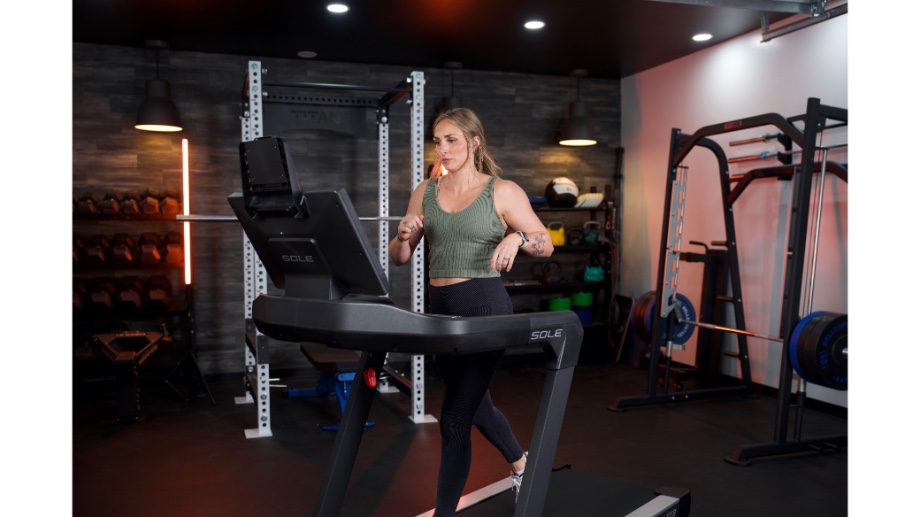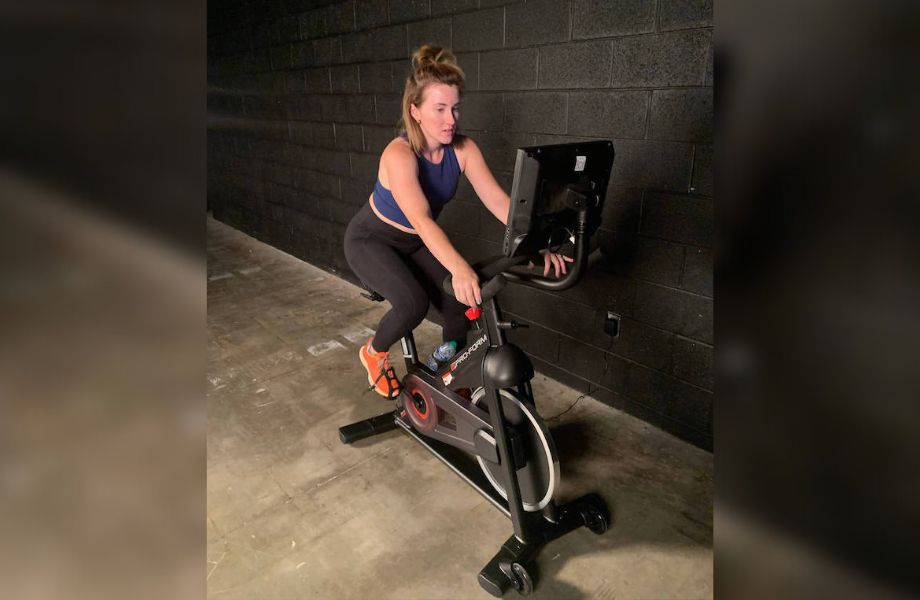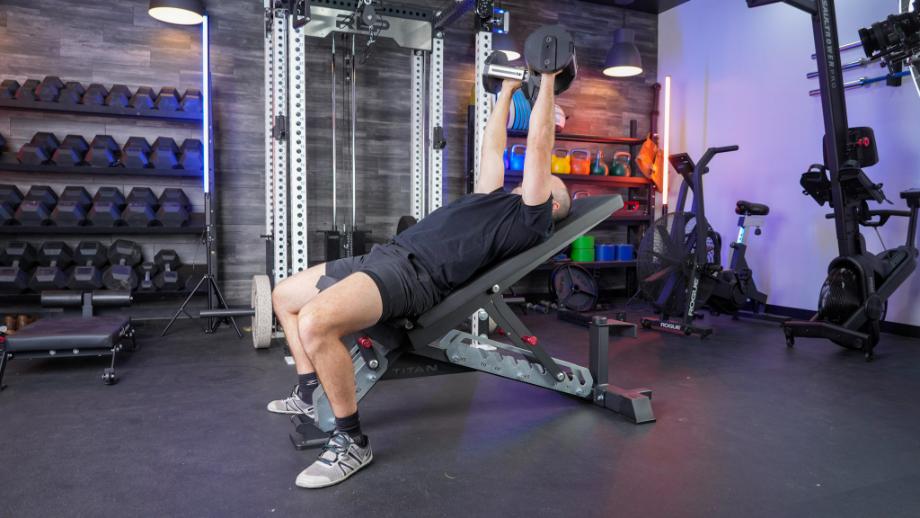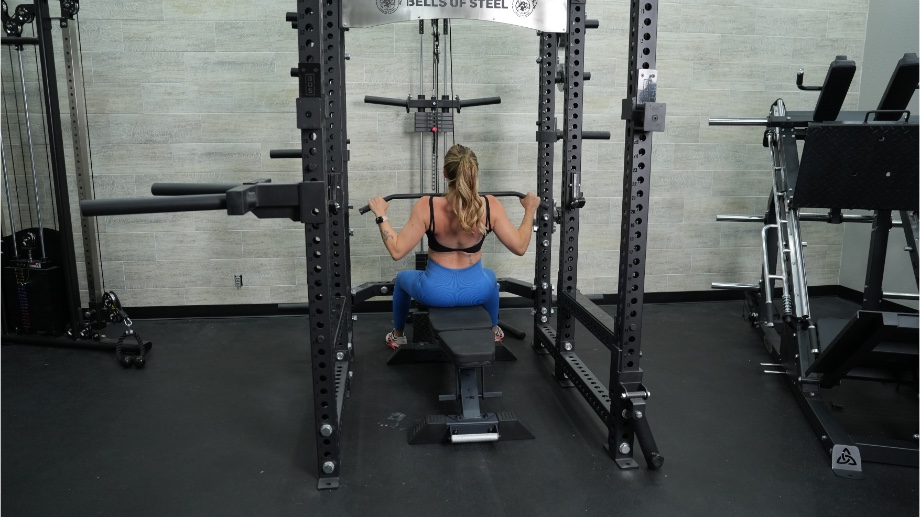We test and review fitness products based on an independent, multi-point methodology. If you use our links to purchase something, we may earn a commission. Read our disclosures.
The market size for home gym essentials has increased over the years, with a significant increase in North America during the COVID-19 pandemic, when commercial gyms were closed down. Unfortunately, with that boom in health and wellness and the home fitness equipment market, the price and cost of cardio and strength training equipment has also increased.
RELATED: Best Rowing Machines
Exercise equipment pricing has gone up for multiple reasons: advancements in the fitness industry, general inflation, more demand in home gym machines and equipment, and other market trends. In this data study, we’ll take a look at home gym equipment pricing trends, and how prices compare to gym memberships. Even with the market growth and price increases, is it still cheaper to own a home gym?
Key Takeaways
We did the market research so you don’t have to. Here are some of the main statistics and insights to take from this study:
- Projecting a forecast period over the next decade, you can save more than $7,000 by choosing a home gym over a gym membership.
- On average, gym membership costs have increased by over 65% in the last decade.
- The average price for the eight pieces of equipment we analyzed (more on our methodology is below) has increased by over 95% in the past 10 years.
- Exercise and stationary bikes have seen the largest price increase over the last 10 years—with prices up more than 180%.
Our Methodology
To collect our data, we analyzed the prices of eight different pieces of gym equipment, as well as five gym memberships, in the years 2014, 2020, and 2024. Using the historical data platform Wayback Machine, we looked at multiple websites, sources, and brands for each piece of equipment to find the average prices for each year. We then used current prices to find our 2024 average price.
For gym memberships, we examined five different gyms that varied in quality and services to find our most accurate average price breakdowns. Using this data, we’ll determine if investing in a home gym or a commercial gym membership is the right move for you in this competitive landscape.
Gym Equipment Price Trends Over the Years
With prices seeming to creep up year after year, it feels like everything has gotten more expensive as time passes. How has that impacted fitness equipment? Let’s take a closer look at the prices of fitness equipment and how they’ve changed in the last decade. We’ll look at eight types of gym equipment:
- Treadmills
- Weight benches
- Dumbbells
- Ellipticals
- Exercise bikes
- Barbells
- Squat racks
- 25- and 45-lb weight plates

This chart breaks down the average prices of each piece of equipment in 2014 and 2020, plus the current prices in 2024.
| Equipment | 2014 | 2020 | 2024 |
| Treadmill | $863.40 | $1,499.50 | $2,339.20 |
| Bench | $166 | $216 | $235 |
| Dumbbell (price per pound) | $1.20 | $1.90 | $3.20 |
| Elliptical | $1,199 | $1,332 | $1,498 |
| Exercise Bike | $357 | $737 | $1,004 |
| Barbell | $149 | $203 | $237 |
| Squat Rack | $393 | $529 | $702 |
| Weight Plates (pairs of 25 lbs & 45 lbs) | $238 | $245 | $340 |
The demand for equipment soared in 2020 when gyms were shut down due to COVID-19. According to our study on home gym equipment trends, we found that search interest on Google for all home gym equipment increased by 71% from 2019 to 2020. Due to these factors and manufacturers being overwhelmed with demand, prices saw a sharp increase.
Prices in 2024 are following the inflation trends we are experiencing. From 2020 to 2024, the average yearly US inflation was 4.6%, compared to 1.6% from 2014 to 2020.
RELATED: Nautilus T616 Treadmill Review
Treadmills have the current highest price point out of the equipment on this list at an average price of about $2,339. However, the exercise bike has experienced the most significant price change from 2014 until now, up over 180% from $357 to over $1,000. The following chart visualizes the percent increase in prices from 2014 to 2024.
With other cardio machine counterparts seeing huge rises, prices of ellipticals have stayed relatively steady, only increasing about 25% in the 10-year span. This could be due to the declining popularity and interest in the product. In previous data studies, we found that interest in ellipticals has dropped 13% in the last year and search volume is the lowest since 2011.
The large price increase in exercise bikes and treadmills can be explained by the emergence and prominence of brands like Peloton and NordicTrack during the pandemic.
RELATED: Best Cycling Apps

When it comes to strength equipment, dumbbells have had the largest price increase, with a change of over 165% in the past decade. This is most likely due to increased interest in the home gym equipment pieces, as well as the increase in innovation with adjustable dumbbells in recent years.
Gym Membership Vs Home Gym Cost Analysis
No matter who you ask, everyone has an opinion, and the age-old debate of a home gym vs gym membership continues. Let’s examine how gym membership prices have changed and compare that to home gym costs in the past, present, and future.

To roughly calculate the price of a home gym, we took the average prices of a weight bench, 100 pounds worth of dumbbells, 140 pounds of weight plates, a squat rack, and an exercise bike. Of course, not every home gym will look like this, but this setup can provide a very solid foundation for a home gym, allowing for numerous types of physical activity with a broad range of functionality.
In 2024, our home gym roughly comes out to a cost of $2,837. On average, a gym membership for a year costs about $1,032—or around $86 per month. This comes from the average of several commercial gyms, at various levels of quality and equipment availability.
Yes, home gyms will have a higher entry point than a gym membership, but let’s look at the long term spending of each option. The following chart shows the cumulative price of a gym membership in 10 years compared to a home gym with the same set up previously mentioned.
At a pace of over $1,000 a year, a gym membership will cost more than our home gym space in just under 3 years.
Even the cheapest available gym membership we found at Planet Fitness (about $15 per month with annual fees) would become more expensive than our home gym after 12 years, assuming there aren’t any price increases.

While a home gym can have a higher price point at the start—especially if you invest in premium and higher-end equipment like Tonal or the Beyond Power Voltra—it’s a one-time investment. With proper care and maintenance on most equipment, you won’t need a replacement product for years to come.
In addition to not having a membership fee, your home gym will save you money on gas and commuting. More importantly, it can save you time from not traveling to and from the gym, or waiting for machines or workout stations to open up.
Home Gym Equipment Pricing Trends: Final Thoughts
There’s no way to get around it: prices have gone up in the home gym space, with both cardio and strength training equipment having gradual—or in some cases, extreme—price increases. This is due to factors in the fitness industry, such as innovation in materials and technology, plus an increase in demand since the pandemic. However, they have also risen due to factors outside the fitness industry—most notably inflation.
Even with the rise of prices, a home gym setup still proves to save money over time. While it has a higher entry point, it can save you more than a gym membership within a few years.
A home gym may not be for everyone, depending on your fitness goals, the space in your house, or a want for a commercial gym atmosphere. However, if you have the means for starting a home or garage gym, it can save you money, even with prices on the rise.
Home Gym Equipment Pricing Trends: FAQs
Here are some frequently asked questions about pricing trends in the fitness industry for at-home workouts and home gym equipment.
Why is gym equipment so expensive now?
A number of factors can be attributed to the rise in cost for strength and cardio equipment. One of the more obvious reasons for the market dynamics is inflation.
However, fitness companies are in a competitive landscape, where brands continue to innovate, with better materials and technological advancements in home gym equipment. However, better materials are usually pricier materials, often leading to a price increase.
Where materials come from can impact price as well; American-made gym equipment is typically more expensive than equipment imported from China.
What is the market size for at-home workout equipment?
In 2022, the global at-home fitness equipment market was estimated at over $11 billion by market reports (USD $11.60 billion1 to be exact). The market is expected to grow at a compound annual growth rate (CAGR) of 5.8% through 2032.
How long does at-home exercise equipment last?
There are a lot of factors that can determine the general lifespan of fitness equipment: the materials and durability of the equipment, the product type, and the amount of use it gets. Gym equipment typically lasts longer in a home gym because it gets less use compared to the activity in a commercial gym setting. Better materials will mean better longevity, but also a higher price.
That said, most gym equipment can last between five and 12 years with proper care and maintenance. More high-end products may last longer, and more budget-friendly options may not last as long. The product type is important, too, as a slam ball may not have the longevity of an Olympic barbell and weight plates.
Why is the home gym equipment industry booming in North America?
While home gym equipment has been growing across the globe in Europe and Asia-Pacific countries, North American countries have seen the most growth. Research reports 2 estimate the North American market to have a revenue around $4.1 billion in 2023. The United States is a key player of the North American market, accounting for about 79% of the market share. Canada shows promise, too, with a growth rate of about 4.6% in the market.
There are many reasons for this level of growth in North America, but a large part is the growing health consciousness of the population. Additionally, many brands in the fitness industry have opened up e-commerce storefronts, making purchasing fitness equipment easier than ever before.
References
- Fortune Business Insights. (2024). Home Fitness Equipment Market Size, Share & Industry Analysis, By Type (Cardiovascular Training Equipment and Strength Training Equipment), By Sales Channel (Online and Offline), and Regional Forecast, 2024-2032. Fortune Business Insights. https://www.fortunebusinessinsights.com/home-fitness-equipment-market-105118
- Global Market Insights. (2024). Home Gym Equipment Market – By Equipment Type (Cardiovascular Training Equipment and Strength Training Equipment), By Category (Smart Equipment and Conventional Equipment), By Price, Distribution Channel Forecast 2024 – 2032. Global Market Insights. https://www.gminsights.com/industry-analysis/home-gym-equipment-market
Further reading

In this cold plunge vs sauna guide, a certified fitness professional explains which you should choose for recovery. Read more

Plentiful in sunshine but limited in foods, we’re likely falling short of vitamin D. Rain or shine, lean on our RD-approved best vitamin D supplement list. Read more

Our ProForm Performance 400i Treadmill review takes a look at this now-discontinued machine and offers alternatives. Read more

The market size for home gym essentials has increased over the years, with a significant increase in North America during the COVID-19 pandemic, when commercial gyms were closed down. Unfortunately, with that boom in health and wellness and the home fitness equipment market, the price and cost of cardio and strength training equipment has also increased.RELATED: Best Rowing MachinesExercise equipment pricing has gone up for multiple reasons: advancements in the fitness industry, » Read more about: How Gym Equipment and Gym Membership Prices Have Evolved Over the Years » Read more

